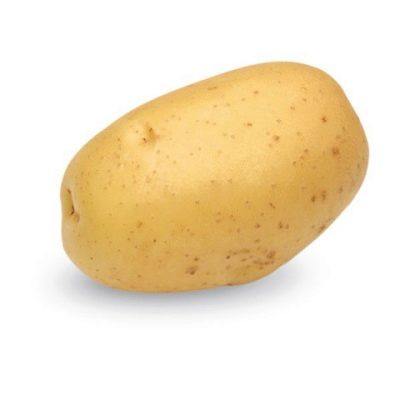
- Authors: Jansen Klomp Martin F.W., Scholtens Wilon R.L.
- Name synonyms: Sylvana
- Year of approval: 2011
- Appointment: dining room
- Tuber weight, g: 92-148
- Peel color: yellow
- Color of the pulp: yellow
- Starch content,%: 13,6-15,3%
- Tuber shape: rounded
- Peel structure: smooth
Potatoes are one of the favorite vegetables and a must in many dishes. Every year, the vegetable range is replenished with selection novelties that are capable of staunchly resisting diseases and various climatic conditions. Sylvanas is one of those. Potatoes taste great and are less whimsical to care for.
Description of the variety
Sylvanas was created by Dutch breeders. In 2011, it passed a successful test in the Russian Federation and was entered into the register for cultivation in the country. Experienced gardeners highlight the following advantages of the variety:
excellent taste;
good keeping quality, which is 91%;
high marketability;
during transportation, the fruits are practically not damaged;
good yield indicators;
when cooking, potatoes do not boil;
persistent immunity to most diseases.
Breeders have tried to breed without flaws. However, if the agrotechnical conditions are not observed, and preventive measures are neglected, the plant is prone to being affected by viral infections.
Characteristics of the appearance of the bush and root crops
The bushes grow tall, semi-erect, of an intermediate type, forming straight stems on which small green leaves are located, with slight waviness at the edges. The resulting inflorescences are red-violet. Sylvanas' fruits are round in shape, of medium size, reaching an average weight of 92-148 g. The peel and flesh of the same color are yellow. On a smooth surface of the skin, medium-sized eyes are located shallowly.
Purpose and taste of tubers
The variety has a table purpose. The culture is characterized by a rich potato flavor. The starch content is in the range of 13.6-15.3%, due to which the vegetable practically does not boil during cooking, retaining its original shape.
Maturation
Sylvanas belongs to the mid-early varieties. Full ripening of tubers occurs 90-110 days after planting.
Yield
The culture is high-yielding. At the same time, 170-374 c / ha are considered average for the variety. With proper agricultural technology, the yield can be increased to 448 c / ha.
Growing regions
Potatoes are zoned for cultivation in regions of Russia with a temperate climate, namely: in the Central, Volga-Vyatka regions and north-western regions.
Growing and care
Correct agrotechnology and observance of crop rotation make it possible to get good potato yields every year. Prepare the site in the fall, carefully digging up the soil, removing weeds and roots. Ideal predecessors in crop rotation are winter cereals, green manure and legumes. In no case should you plant potatoes after nightshades (tomatoes, eggplants, peppers), since they have the same infections. Re-planting the culture on the site is possible only after 4-5 years.
They start planting in mid-May, by which time the soil has time to warm up enough to + 8 ... 10 degrees.
The tubers are prepared one month before planting. Root crops are transferred from storage, sorted out, damaged ones are removed. For the emergence of sprouts, they are left in a dry, warm and bright place. The day before planting, tubers can be treated with a weak solution of potassium permanganate for disinfection and a growth stimulator.
Experienced gardeners note that the Sylvanas variety gives a good harvest when planted with the bed method. To do this, make a hole of small depth (8 cm) and a mound no more than 10 cm in height, adhering to an interval in the landing between the pits of 30 cm.Also, be sure to add 1 cup of wood ash to each hole.
The culture is unpretentious in care. But you should regularly fertilize, and control the moisture content of the soil. The first feeding is applied when the plant begins to gain green mass. To do this, dilute rotted manure with liquid at the rate of 1: 15, making a solution under each bush. During the flowering period, the bushes need ash. After that, the infusion of mullein with the addition of superphosphate is again used.
The depth of soaking of the soil should be small, at least 15-20 cm. The irrigation frequency is regulated according to the indicated depth. Watering is stopped several weeks before harvest. Excess moisture leads to the formation of lentils on the tubers. Weeding and hilling should be done regularly. The weed takes away nutrients and moisture from the plant.

Planting potatoes is one of the main spring activities traditional for Russian gardeners. There are many ways to plant this vegetable, allowing you to get a good harvest in different conditions and climates. Before planting, you need to carefully prepare the planting material, correctly determine the timing, competently prepare the soil.


Soil requirements
Sylvanas potatoes prefers to grow on fertile, slightly acidic and slightly alkaline soils with deep groundwater.

Disease and pest resistance
The variety has strong immunity to most diseases. They struggle with ailments by regular weeding of beds and preventive treatment of bushes with fungicides. It should be noted that the culture is practically not damaged by potato crayfish and golden nematode. While showing average resistance to common scab and late blight. Pests rarely damage Sylvanas. The Colorado potato beetle sometimes attacks bushes.

Potatoes are a popular vegetable crop that many gardeners planted on their site. But it is unlikely that it will be possible to grow a bountiful harvest of tasty and large tubers if the beds are not properly protected from the most common diseases and pests. Often, the development of diseases of various etiologies of potatoes goes unnoticed, so it is important to identify the problem in time and eliminate it.
















































































